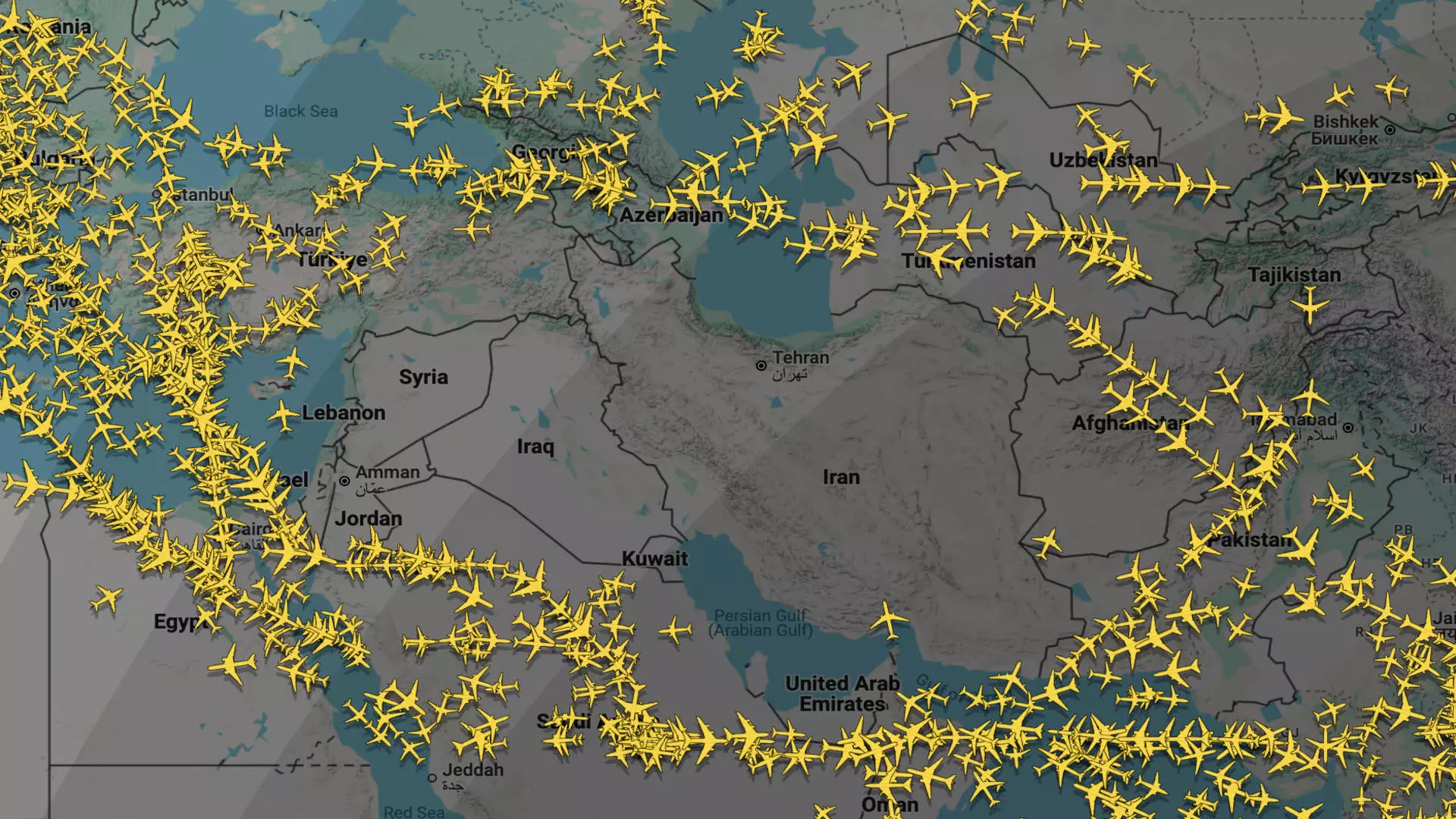The Middle East has always been a hub of both tourism and transcontinental commerce, but recent military tensions have created a precarious environment for airlines operating in the region. The situation escalated dramatically when Iran’s armed forces claimed responsibility for a missile strike on a U.S. military base in Qatar. This event starkly exemplifies how swiftly global dynamics can shift, leading to significant ramifications not only for national security but also for the airline industry.
Flight disruptions intensified on a recent Monday as airlines scrambled to respond to the missile strike. Aviation data indicates that over twenty commercial flights destined for Qatar were rerouted or diverted, marking a pivotal moment that underscores the fragility of air travel in this geopolitically charged area. Crucially, the closure of airspace over the United Arab Emirates (UAE) and Bahrain’s temporary airspace shutdown further hampered air traffic. This sudden upheaval challenges the longstanding operational norms that airlines have enjoyed for decades.
Airline Responses: Safety at the Forefront
Major international airlines, including British Airways, Air France, and Finnair, swiftly shifted their strategies in light of the news. British Airways announced the cancellation of its flights to Doha through Wednesday, emphasizing passenger safety as its utmost priority. Conversely, American Airlines and United Airlines had previously suspended their flights to the region well before the recent escalation, indicating a growing reluctance to operate in volatile environments.
The rapid response from these airlines signals a crucial understanding of passenger safety and operational prudence in an era where geopolitical tensions can arise suddenly and sharply. Airlines must now weigh the risks associated with flying routes that could potentially become targets in a conflict zone. With these unforeseen challenges restlessly looming, a new reality is precipitating in airline operations, suggesting a future where rapid adaptability becomes essential.
Cost Implications and Strategic Reevaluation
Air freight and commercial travel are not merely impacted by direct threats; the prolonged instability in the Middle East compounds operational costs significantly. Airlines are increasingly forced to reroute flights, opting for longer, more fuel-intensive paths as a precaution against potential hostilities. This realignment translates into heightened operational costs, forcing airlines to reevaluate their pricing structures and, inevitably, their profit margins.
As ongoing conflicts in Ukraine and the Middle East converge, the implications for air travel deepen, creating an industry-wide exigent need for strategic flexibility. If airlines continue to endure these geopolitical pressures without a clear strategic response, the long-term viability of routes would be at risk. As major players adjust their services—from delays to cancellations—their operational strategy must become even more agile to weather potential future disruptions.
The Human Element: Passengers in the Crossfire
With these developments unfolding, the impact on travelers is immense. The uncertainty surrounding safety and flight availability adds another layer of stress for individuals seeking to navigate their travel plans. It is not just the airlines that grapple with these challenges; travelers must navigate fluctuating schedules, cancellations, and the complexities of rebooking in real-time.
The human element often gets overshadowed in discussions of airline operations, but the looming specter of conflict is a reminder that passengers remain at the heart of this intricate web of air travel. The human cost of geopolitical tension stretches beyond airports and into the lives of families, business professionals, and tourists who now face an uncertain journey ahead amidst the turbulence of international relations.


Leave a Reply